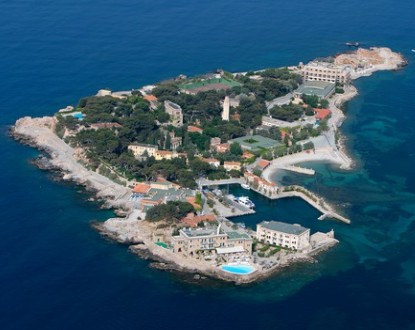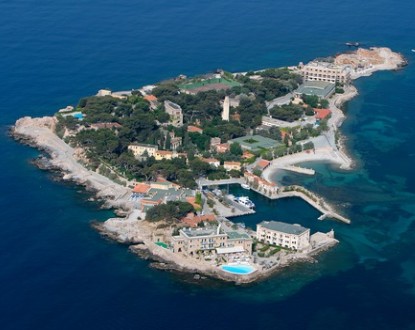Although they are two, they do not form an archipelago. One is within earshot of Bandol, and the other stands in front of le Brusc. Paul Ricard acquired both in the 1950s and quickly turned them into two paradises, two oases where nature is preserved.

Just a few strokes away from the seaside resort of Bandol, the island, or rather the islet, awaits visitors. It takes less than seven minutes to reach it by boat. The tour of Bendor takes about half an hour. The walk is well-laid out, and the hiker will successively discover a rugged coastline with rocks, torn laces by the iodized kisses of the sea. Its transparent waters create the illusion of a tropical paradise. In a small enclosed cove, a beach of blond sand can be enjoyed.
The port (the smallest in the Mediterranean) shelters boats in a landscape where Robinson might have discovered Friday. Bendor was devastated by the Saracens in the mid-13th century. In the 17th century, it became a land of exile, gradually abandoned and ultimately deserted when Paul Ricard bought it in 1950. It was his haven of peace and tranquility, where he met many artists. Salvador Dali created “Tuna Fishing” there in the 1960s. The museums of advertising objects and wines and spirits will charm visitors. Artisans, particularly in statuary, offer their works to the public.
A monument in homage to Pierre Puget welcomes tourists at the landing stage with the motto “No gain without pain”.
The Embiez
It is from the small port of le Brusc at Six Fours that one embarks on a ten-minute crossing. Paul Ricard acquired this island in 1958. Just like Bendor, he developed it. The Embiez are made for leisure and discovery. The wonderful marine depths will enchant diving enthusiasts. The 95-hectare island is perfect for walks, with a richly lush flora. For those unable to walk, a little train will take them around the island. There, one can discover vineyards and flowered paths.
An oceanographic institute with an aquarium recreates the local fauna and flora, where more than a hundred species can be admired. It is in the museum that one can observe seahorses born in 2006, as well as corals. The habits of selachians, cetaceans, and sea turtles are explained. Nearby amphoras teach us about maritime history and the Roman period. One will also find arenas; Paul Ricard was an aficionado. A painting museum, wild oaks, the Sainte Cécile chapel, as well as Paul Ricard’s tomb will complete your visit.
Thierry Jan.



